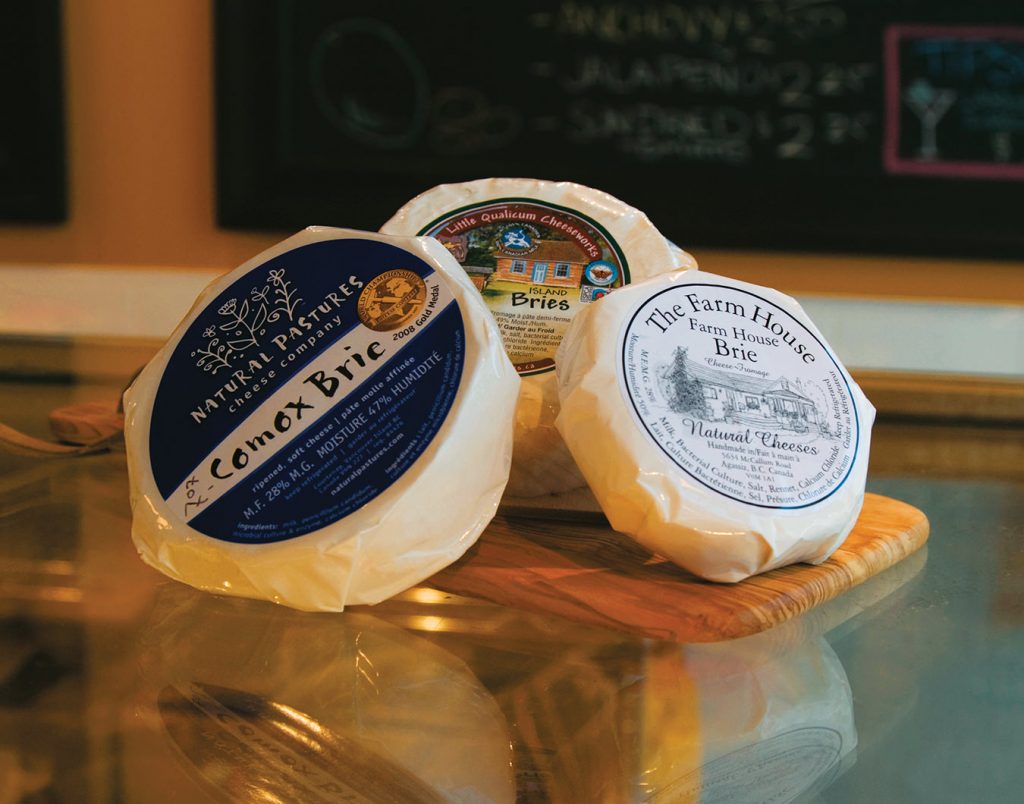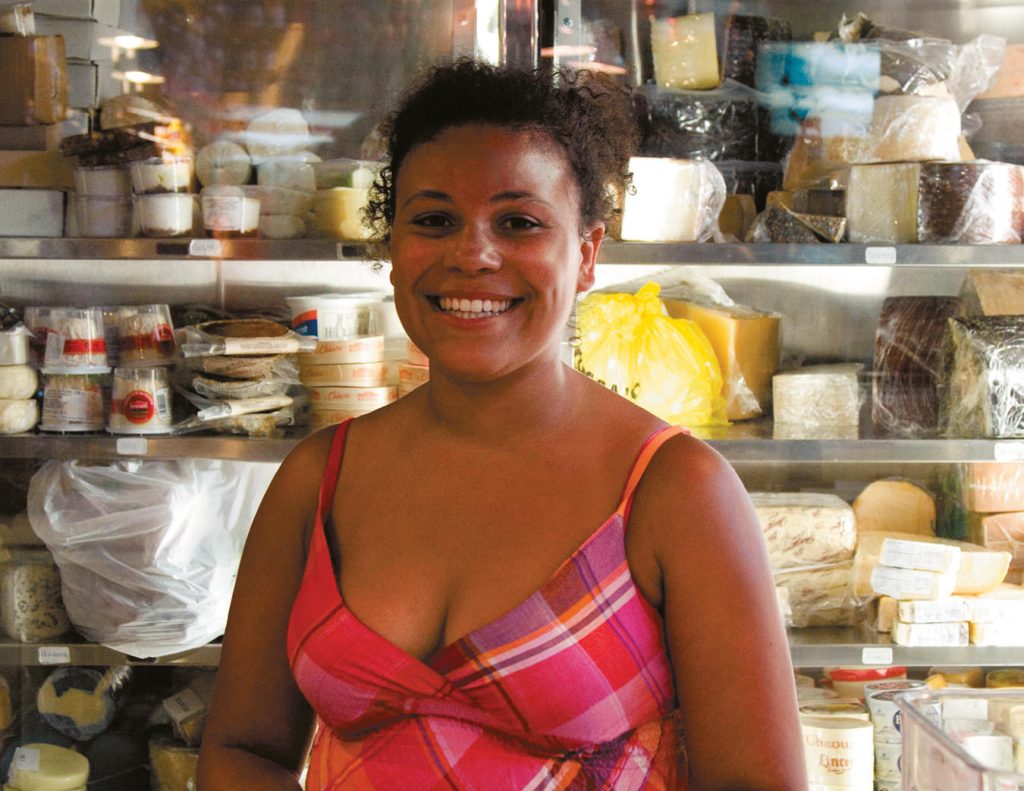“Where there’s milk, there’s cheese,” says Werner Schonberger. “It’s really that simple.” A lifelong cheese aficionado, Schonberger owns Dussa’s Ham & Cheese on Granville Island, and can effortlessly list famous cheeses the world over, from cave-cultivated roquefort in Southern France, to parmigiano-reggiano and its eponymous birthplace in Italy. Many countries produce cheese so perfect, you wouldn’t want to eat that type made anywhere else. But in B.C., it’s no longer a rarity to find a wide selection of fine, locally made cheeses beside the imports. Our artisan bries have earned themselves a place on every platter.
At Schonberger’s store, employees work behind coolers lined with cheddars, Gruyères, salty duck prosciutto, sweet syrup-packed Greek pistachios, and more; they’ve got the all the right fixings for an appetizer tray. Dussa’s manager, Michelle Etienne, advises on the cheese selection process, a roundel of local brie in hand. “First, you want to touch it, feeling for a slightly soft exterior. I even peel back a bit of wrapper to smell it.” She demonstrates, nodding approval. “A definite aroma. Brie lasts for a long time and can get quite strong, which is completely safe to eat if that’s your preference, but if it starts to smell like ammonia then it’s time to toss.”
Brie is a soft-ripened cheese, maturing from the rind inward, and unpressed. “A good brie should be covered in a very thin bloom—that’s the white layer surrounding it,” says cheese expert Allison Spurrell, who owns three Les Amis du Fromage cheese shops in Vancouver. When eaten, the delicate, thin, velvety rind should blend seamlessly with the creamy core, enhancing both flavour and texture.
“It has taken local cheese makers some time to get this aspect of brie just right,” Spurrell points out, “but when you think that some have been in the cheese making business for only a short time, and in France they’ve been making brie for hundreds of years, it’s only natural to see a difference.” That said, looking over her popular selection of local bries, including both goat and cow varieties from the Farm House Natural Cheeses based in the Fraser Valley, and Mountain Meadow’s sheep brie from Chase, B.C., it’s clear that local cheese makers are over their learning curve. And there are awards to prove it.
Most recently, accolades have gone to Natural Pastures Cheese Company and their cheese maker Paul Sutter, who took home a gold medal along with the title of Best Brie at the 2008 World Championship Cheese Contest. And this past spring, Little Qualicum Cheeseworks made it into the finals at the 2009 Canadian Cheese Grand Prix. They were the only B.C. cheese maker to advance that far, with their rich and creamy Island Bries winning the prize.
Nancy Gourlay, an artisan cheese maker for Vancouver Island’s Little Qualicum, describes the steps that take their fresh milk from cow, to curd, to cracker. “Only the cooled evening milk and the warm milk from the morning milking will do,” says Gourlay, who confides that their brie recipe was given to her by colleagues from Switzerland. The milk is carefully pasteurized before a mixture of ripening cultures and an inoculation of white mould is added. These later grow on the surface and give brie what Gourlay calls, “that characteristic mushroomy flavour and aroma”.
As the cultures begin to work, a vegetable-based coagulant is added. The milk rests, and the resulting curd is cut into marshmallow-sized pieces and gently stirred, Gourlay explains. Thus begins the delicate process of separating the whey (the watery part) from the curds (the solid part). This is tricky because a number of variables must be taken into account, such as “how much whey I allow to escape, whether to let it rest or stir, or whether it should be diluted with water in order to slow down fermentation. All these decisions vary depending on the season and composition of milk, and how fast I need the cheese to ripen and be ready for market,” Gourlay explains. Afterward, the mixture is poured into round moulds and the last of the whey is finally removed.
These little baby cheeses rest overnight in a warm room and are treated to a brine bath in the morning, for salt absorption (“without which they would taste terrible,” Gourlay adds.) After ripening for about 10 days in a heat- and moisture-controlled environment—the surfaces becoming overgrown with the white moulds—the brie is finally ready for packaging, shipping and, of course, eating.
“I had the brie for lunch today on a cracker, with an apple in my other hand,” Gourlay says. “Pretty simple really, but cheese is nature’s fast food.” While that may depend on your definition of fast, the addictiveness is undeniable.












